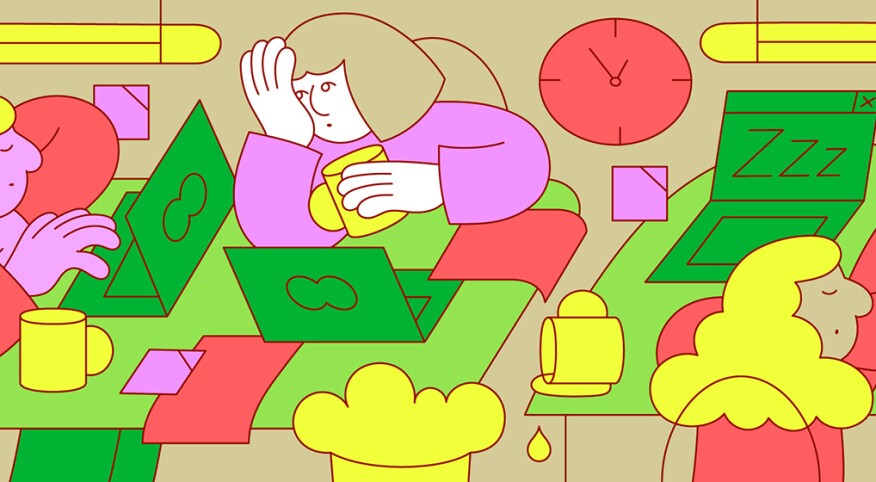Every day at 1 p.m. without fail, I feel an overwhelming urge to take a nap. On most days, I give in, losing a chunk of my afternoon to a *not needed* slumber. I’m fortunate that I work from home and make my own hours, but this desire to rest in the middle of the afternoon is starting to wreak havoc on my life. After all, there are only so many hours in the day to get through everything on my to-do list. Sound familiar?
According to a nationwide study by GfK’s KnowledgePanel, more than half of Americans crave a midday nap at least once a week at exactly 2:58 p.m. Sixty-six percent of respondents say they feel drowsy, 48 percent are less productive, and 43 percent are worn out (sign me up for all three). Here are some science-backed ways to combat that slump, whether you experience yours at 1 p.m., 2:58 p.m. or any time in between.
Eat a high-protein, low-carb lunch
One of the reasons you may be having a slump is because simple carbohydrates — such as white bread, potato chips or regular pasta — break down into glucose quickly, giving you an instant sugar rush and then a slump. While you should still eat carbs (adults should be getting 45–65 percent, or 203–293 grams per day on an 1,800 calorie-per-day diet, according to the Dietary Guidelines for Americans), switching to whole grain, unprocessed carbs will get rid of that slump. Pairing protein with those nonrefined carbs slows the absorption of the carbohydrates to help with long-lasting energy. It also keeps you fuller longer.
Put down the coffee
It sounds counterintuitive. Drinking a cup of coffee should help, shouldn’t it? New research by Mark Stein, a psychiatrist and professor of psychiatry and pediatrics at the University of Washington, finds that caffeine will help with attention, alertness and energy levels in the short term. But in the long term it will have the reverse effect, and will build up sleep pressure in your body: the drive to go back to sleep. Essentially, caffeine temporarily suppresses sleep pressure, so you’ll feel more awake immediately after drinking it. But as soon as it wears off, you will experience a high level of sleep pressure leading to your midday slump. Plus, the more coffee you drink, the more tolerance you build, which makes you even more sleepy. So, you sleep less and drink coffee more, exacerbating the cycle. Try going cold turkey for a few days, and this should help with your midday slump. While you’re struggling, try taking a 15-minute walk. A study published in the journal Physiology & Behavior found that just 15 minutes of physical activity rather than caffeine is more effective for women in boosting energy.
Stretch
There’s a reason why you have an urge to stretch the moment you wake: It stabilizes your blood sugar and releases epinephrine and norepinephrine, which are hormones that decrease sleepiness. Stretching will get your blood flowing and give you a burst of energy, and it can be done at the desk. Simply roll your neck, do a few seated spinal twists, bend over and touch your hands to your feet and then lift your hands high above your head.
Drink water
Even mild dehydration — a 1.5 percent loss of normal water volume — will lower your energy level. It happens because dehydration literally shrinks your brain cells, leading to fatigue, reduced short-term memory and poor concentration, according to a study. Even a minimal level of dehydration can affect cognitive functioning: a 30-minute run could lead to that 1.5 percent dehydration rate — and you won’t feel thirsty until you’ve lost 1 to 2 percent of your water volume. By then, you may be napping. In one small study, 12 women drank 6 ounces of water daily, dehydrating them by 1 percent. They then played a game measuring their cognitive flexibility. The result: They had 12 percent more total errors. After they took a hydration break, they instantly returned to their baseline cognitive function. Not sure how much to drink to ward off your midday slump (and to be at your best cognitive levels)? The National Academies of Sciences, Engineering and Medicine says women need 91 total ounces of H2O daily, though about 20 percent of that comes from fruit — depending on your weight, muscle mass and the number of hours you spend in the sun.

Martina Paukova









